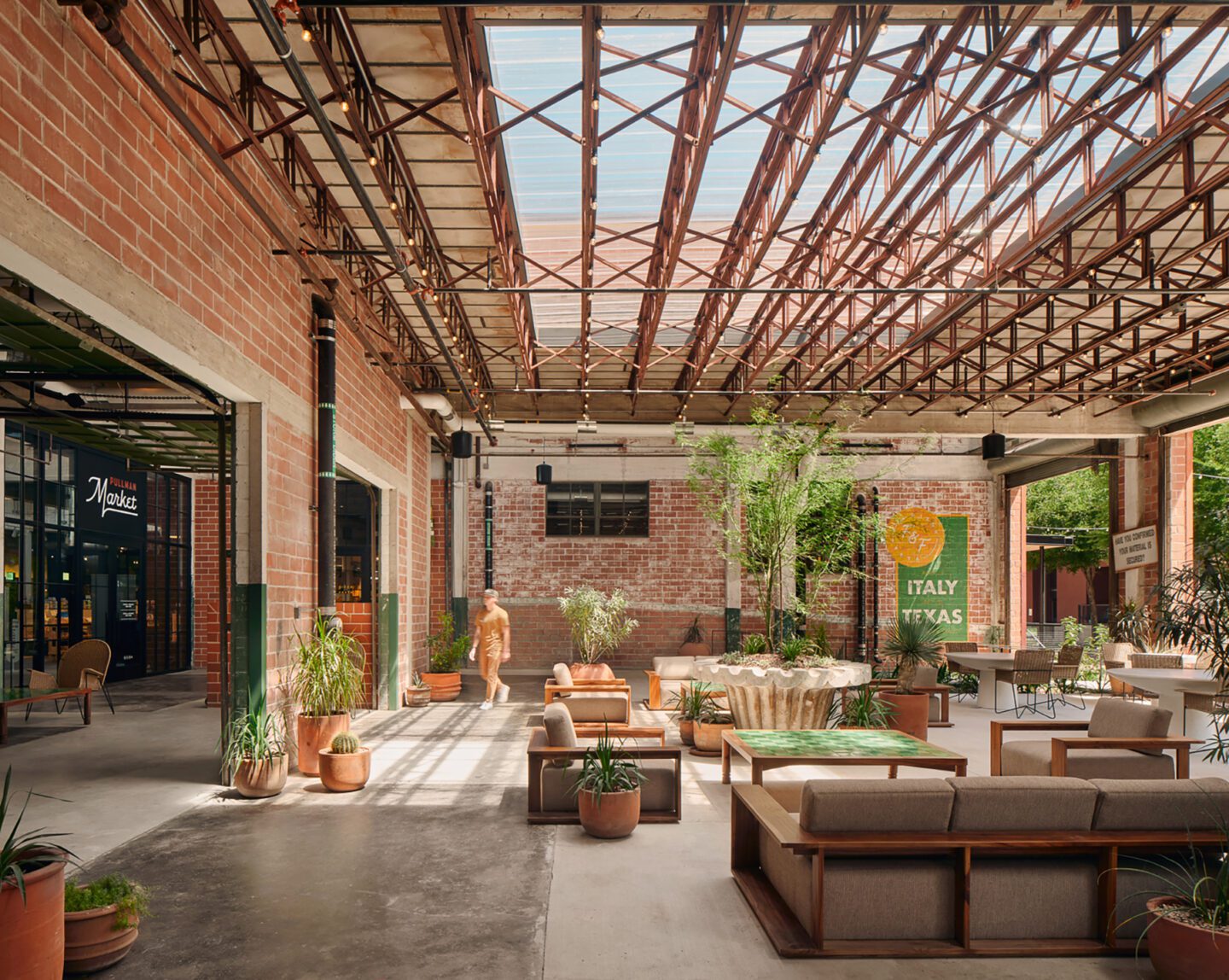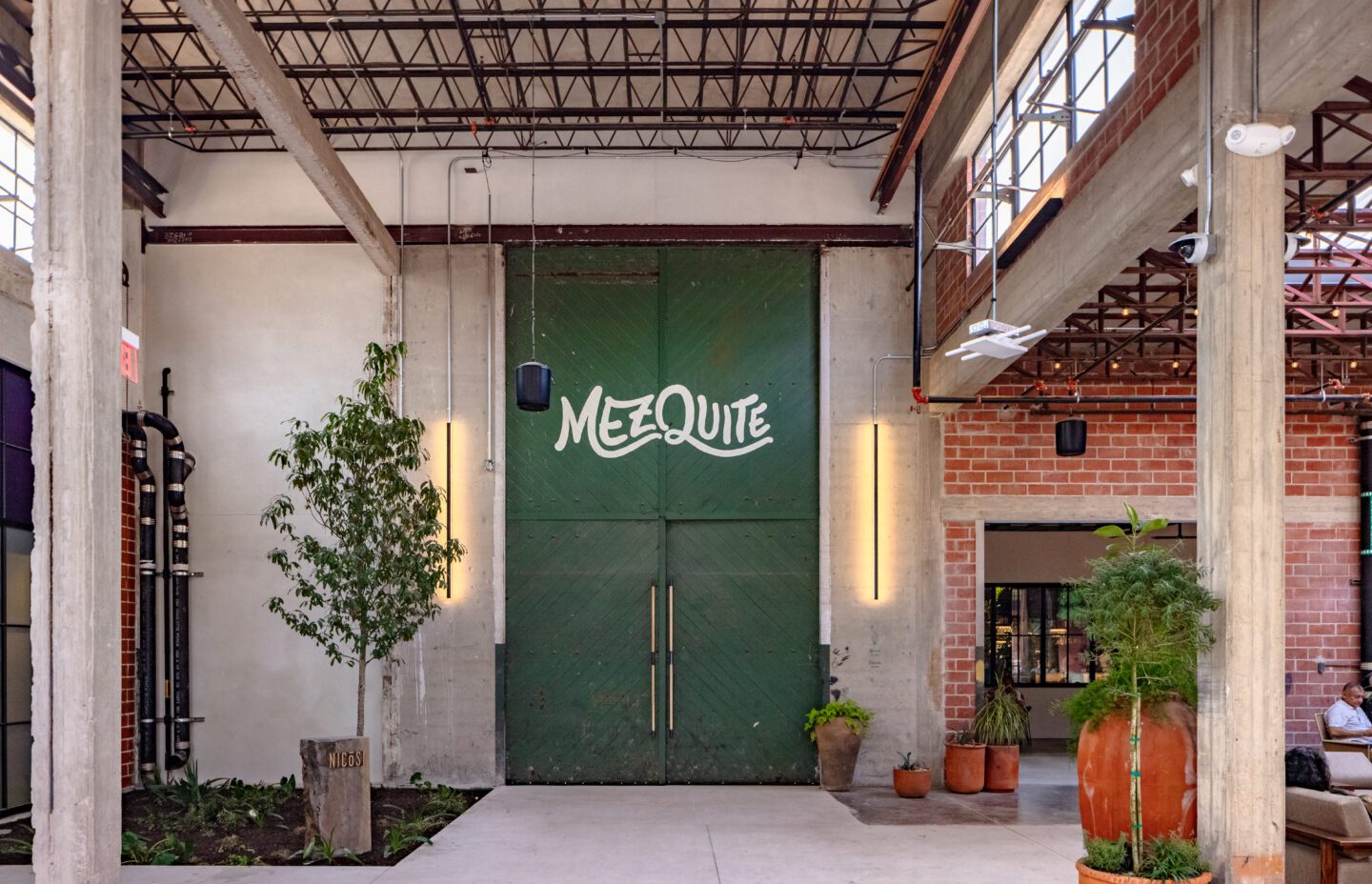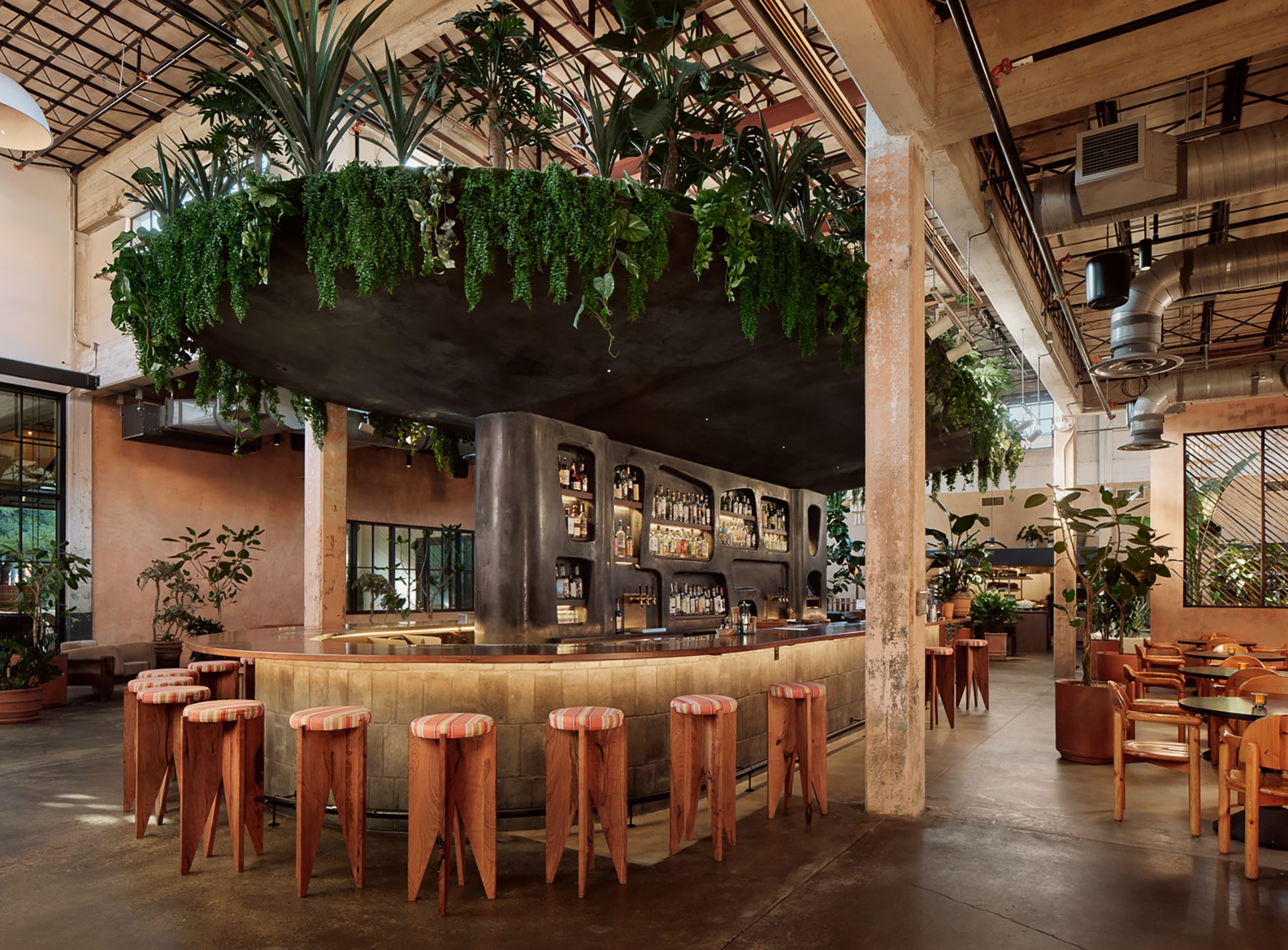
Mezquite
San Antonio, Texas | Adaptive Reuse
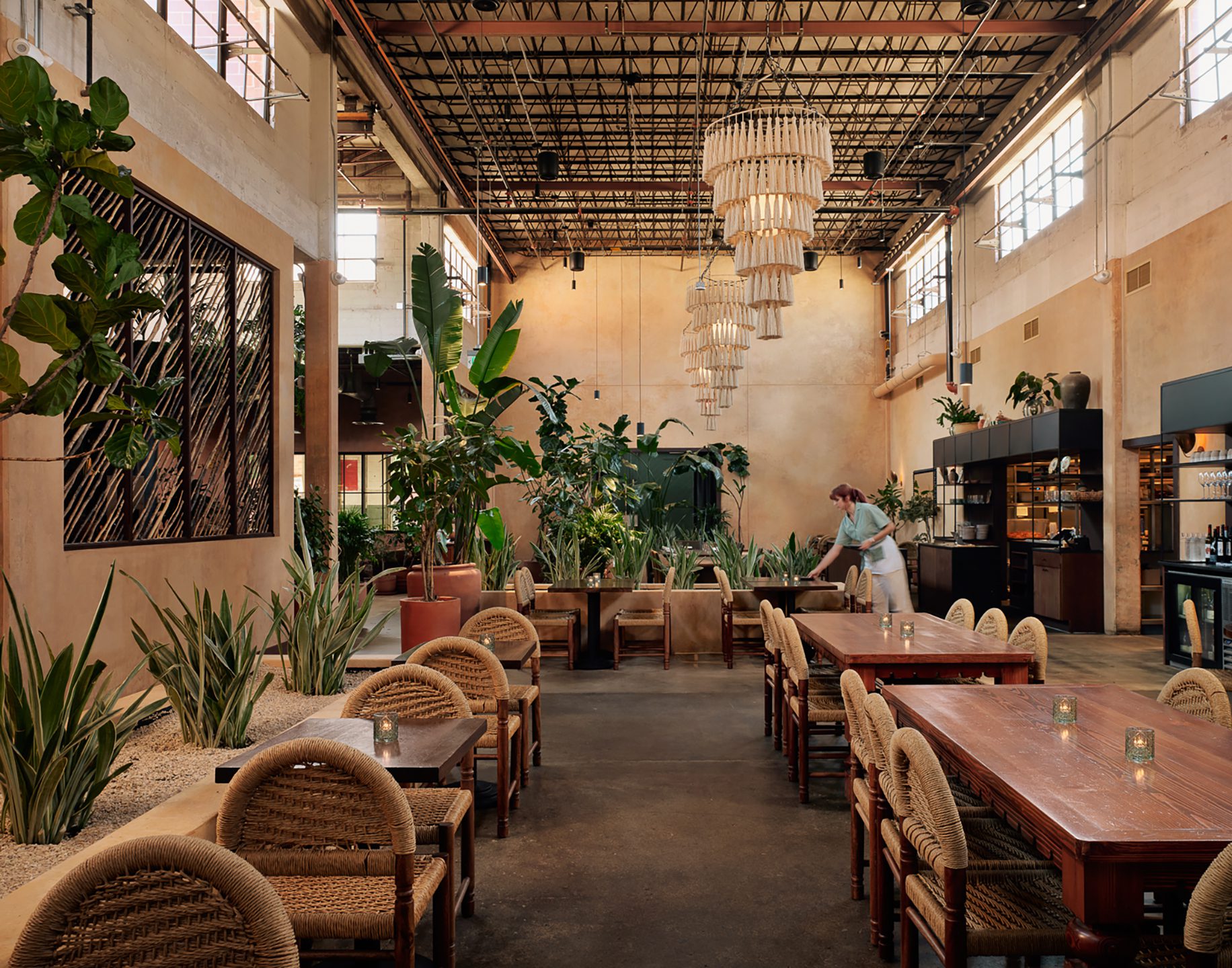
Mezquite, the Sonoran-inspired restaurant at Pullman Market, occupies the carefully restored 1948 Samuels Glass Co. building, a landmark of industrial heritage in San Antonio’s Pearl District. Taking cues from its cuisine, the main dining room and adjoining Mezcaleria bar are infused with echoes of early-20th-century Mexican eateries: open layouts, lush greenery, and an unwavering celebration of craft—from bespoke furniture to the subtle texture of hand‐troweled plaster.
This ethos extends seamlessly into the broader adaptive-reuse strategy for Pullman Market. By preserving the original steel trusses, exposed brick walls, and the building’s iconic shell, the project honors its industrial past while keeping embodied carbon locked in place. Within this 40,000-square-foot culinary ecosystem, Mezquite’s design champions material honesty: nothing is hidden, and every surface tells its own story.
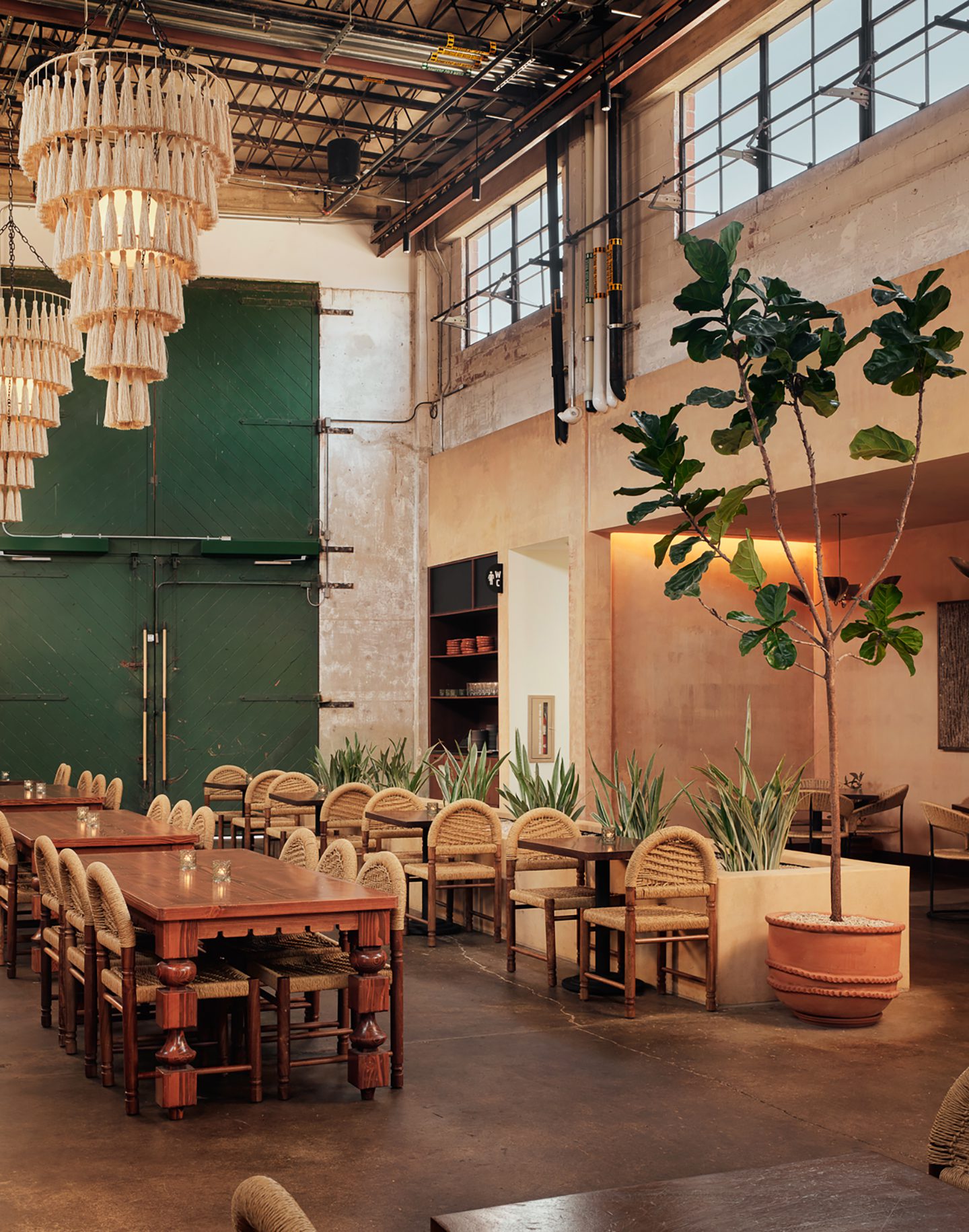
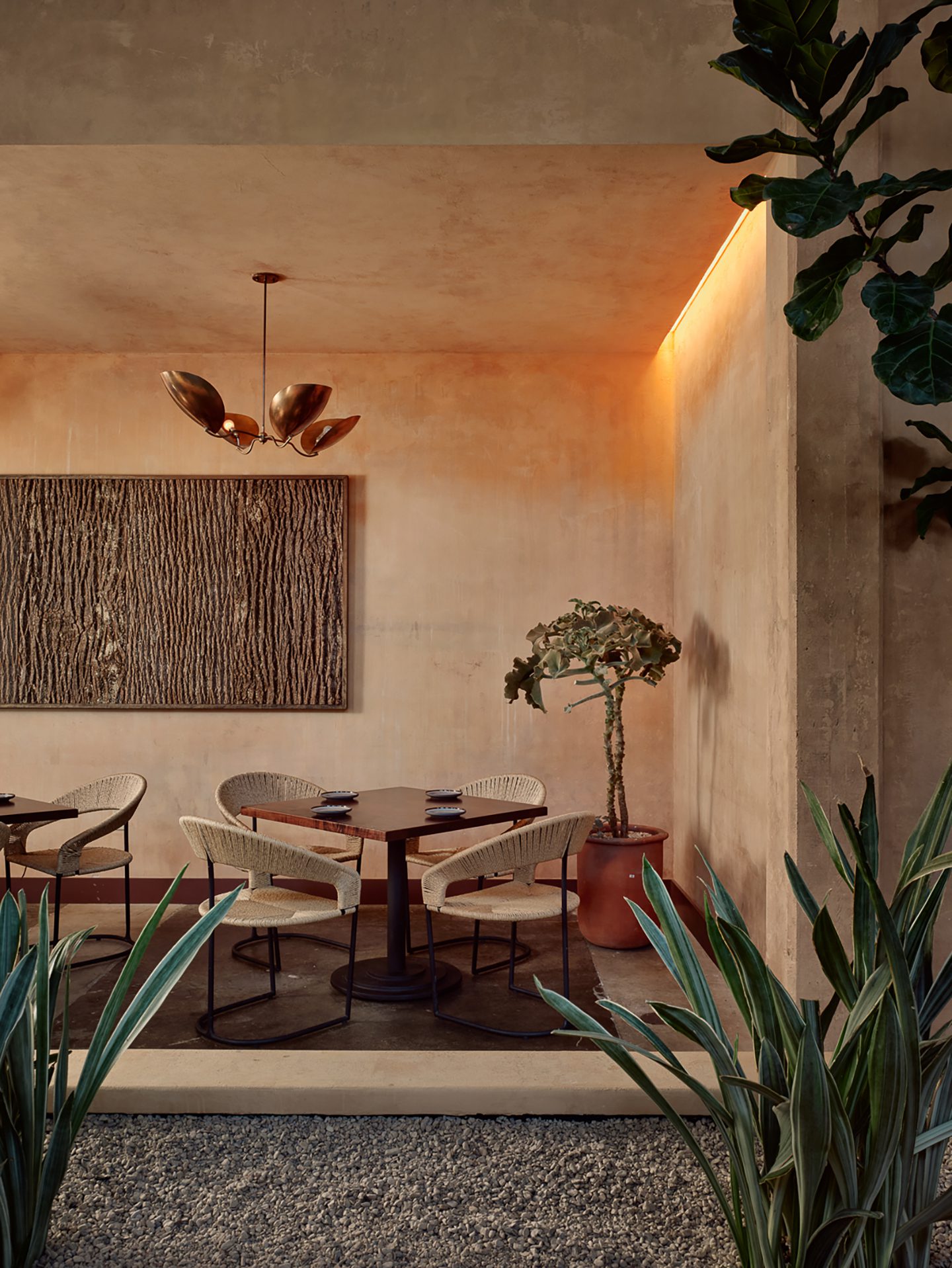
Sustainability lives on in Pullman Market’s sourcing, too. More than 150 Texas-based suppliers—each within a 100-mile radius—provide fresh ingredients, slashing food-mile emissions and uplifting regional agriculture. Unsold produce and compostable waste from the market’s grocer and restaurants, Mezquite included, are cycled back to partner farms, closing the nutrient loop and enriching local soils.
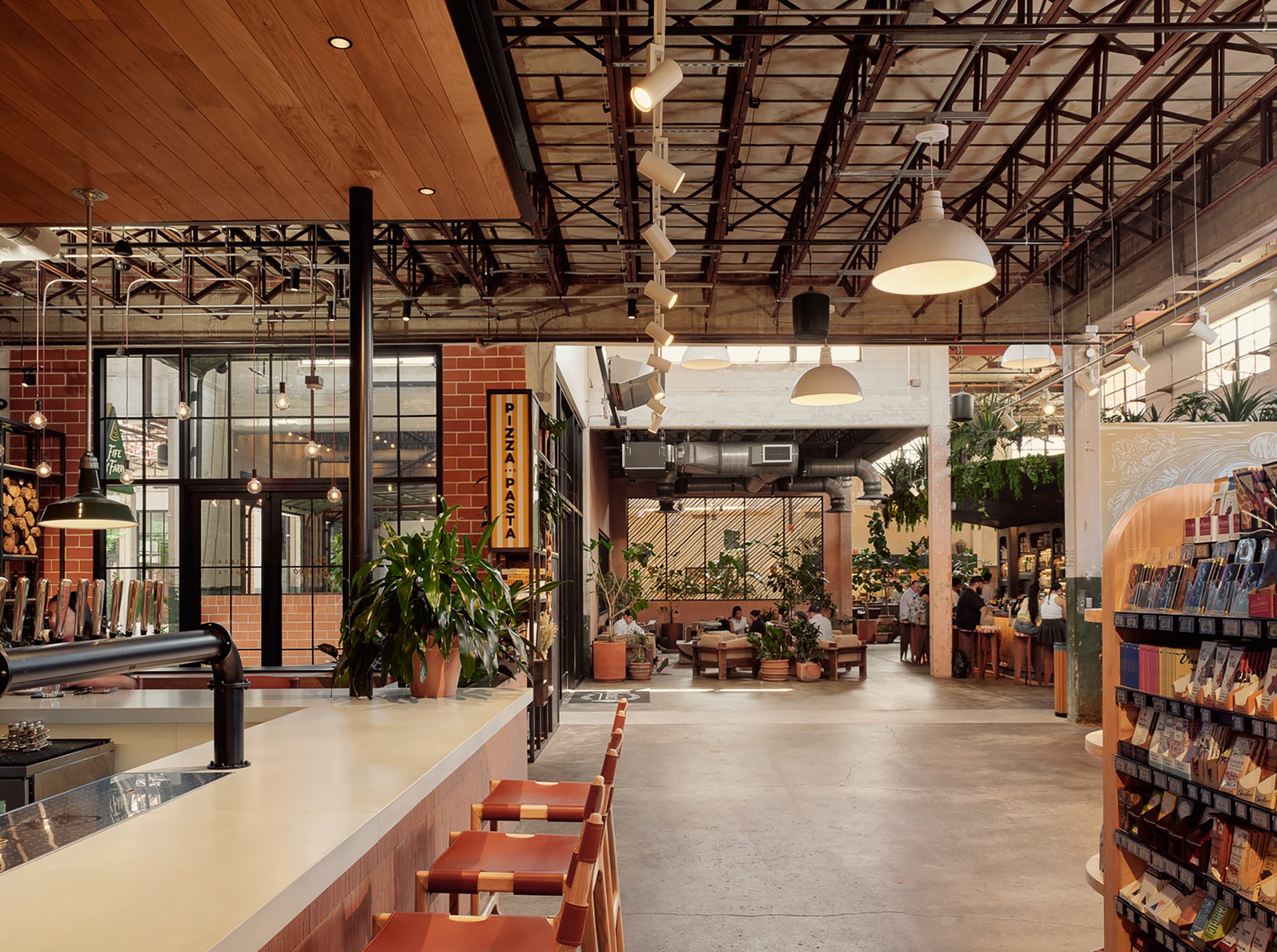
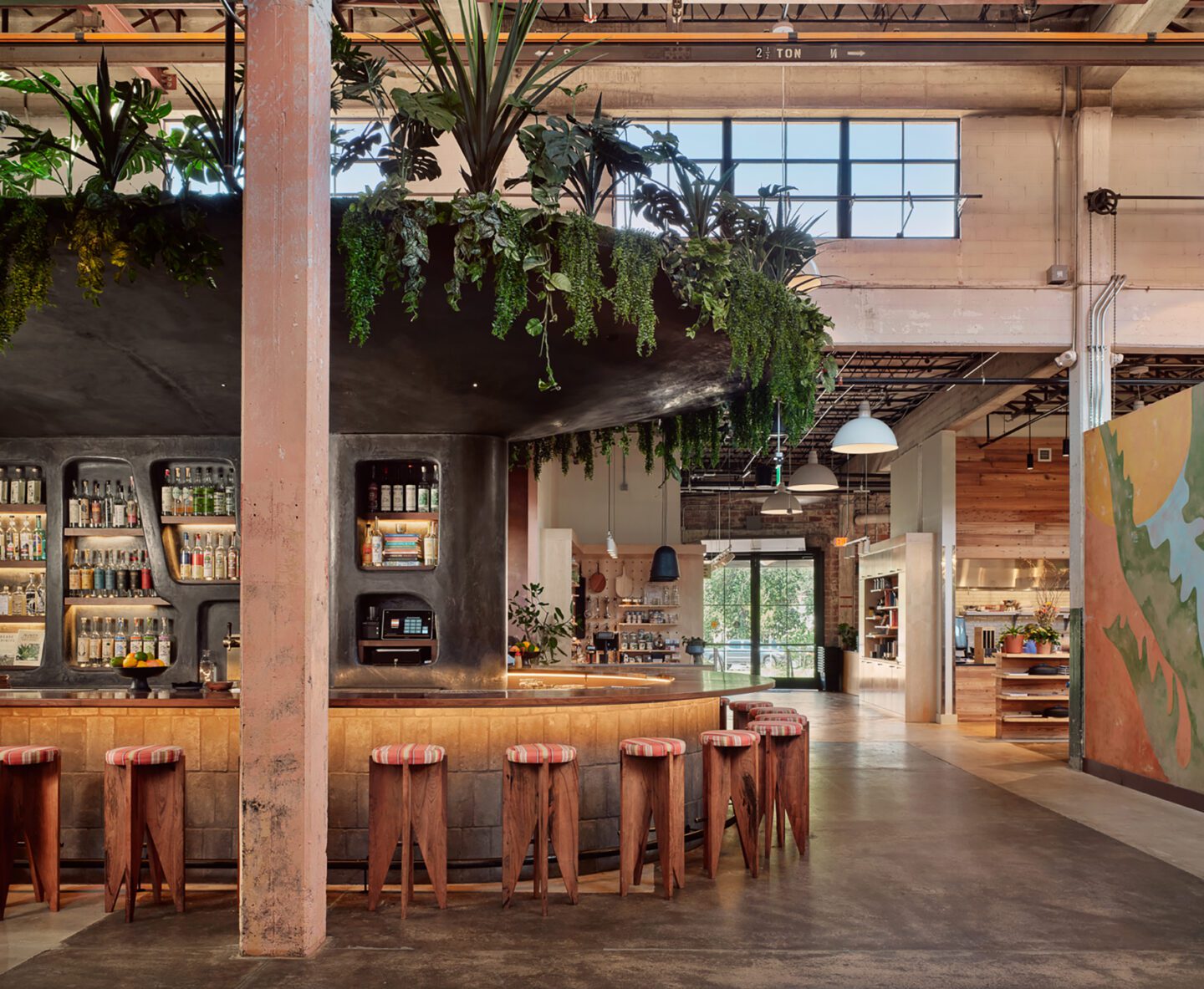
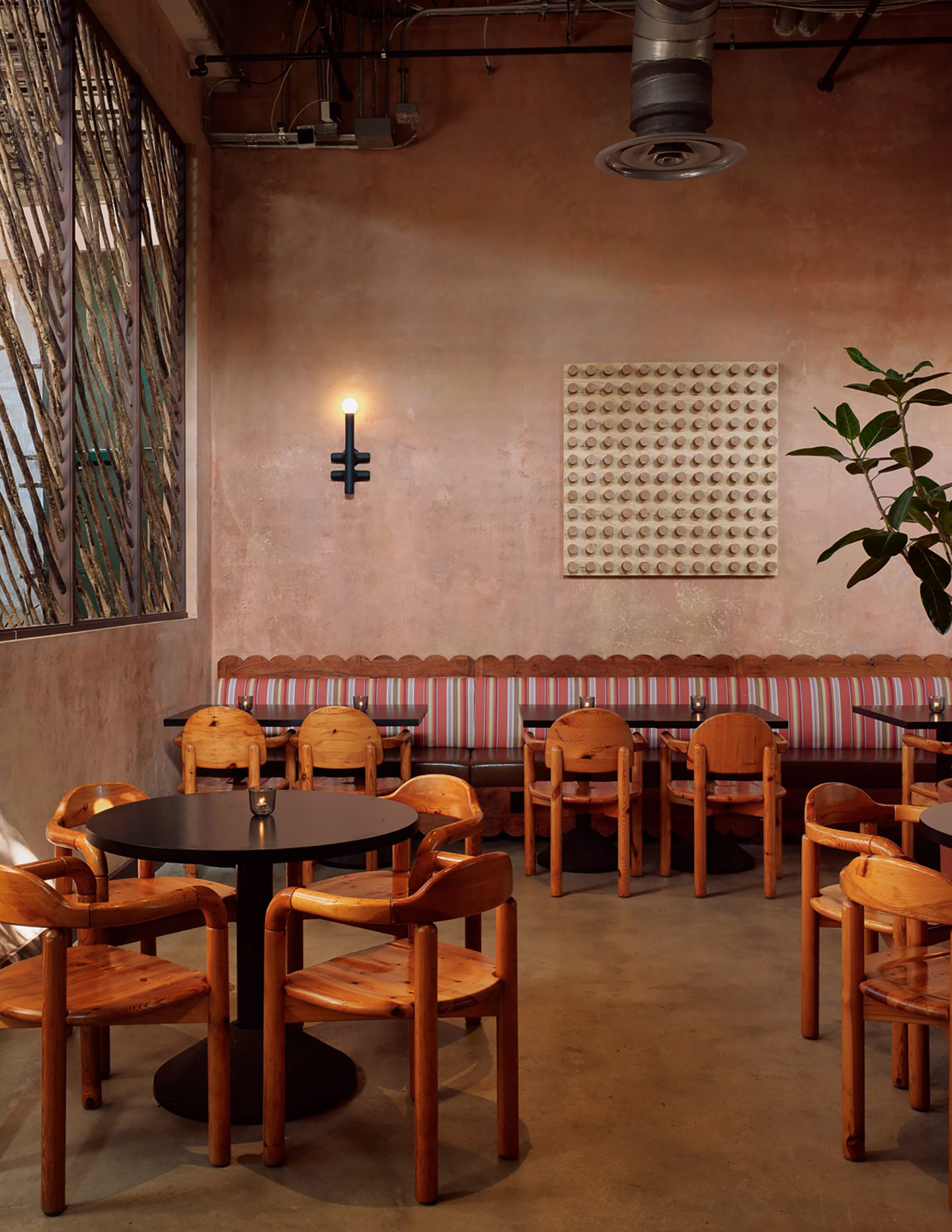
Inside Mezquite, the narrative of Mexican culture unfolds through texture and form. A sculptural mezcal bar, inspired by Oaxacan barro negro, offers a tactile centerpiece that eschews synthetics. In the dining area, elegant plaster walls transition from subtly rough to smooth as they rise into the double-height space and the original clerestory windows, while ocotillo screens add organic warmth to the restaurant and lounge spaces. All furniture was sourced in Mexico, layering artisanal detail over the factory’s rugged bones and weaving past and present into a cohesive whole.
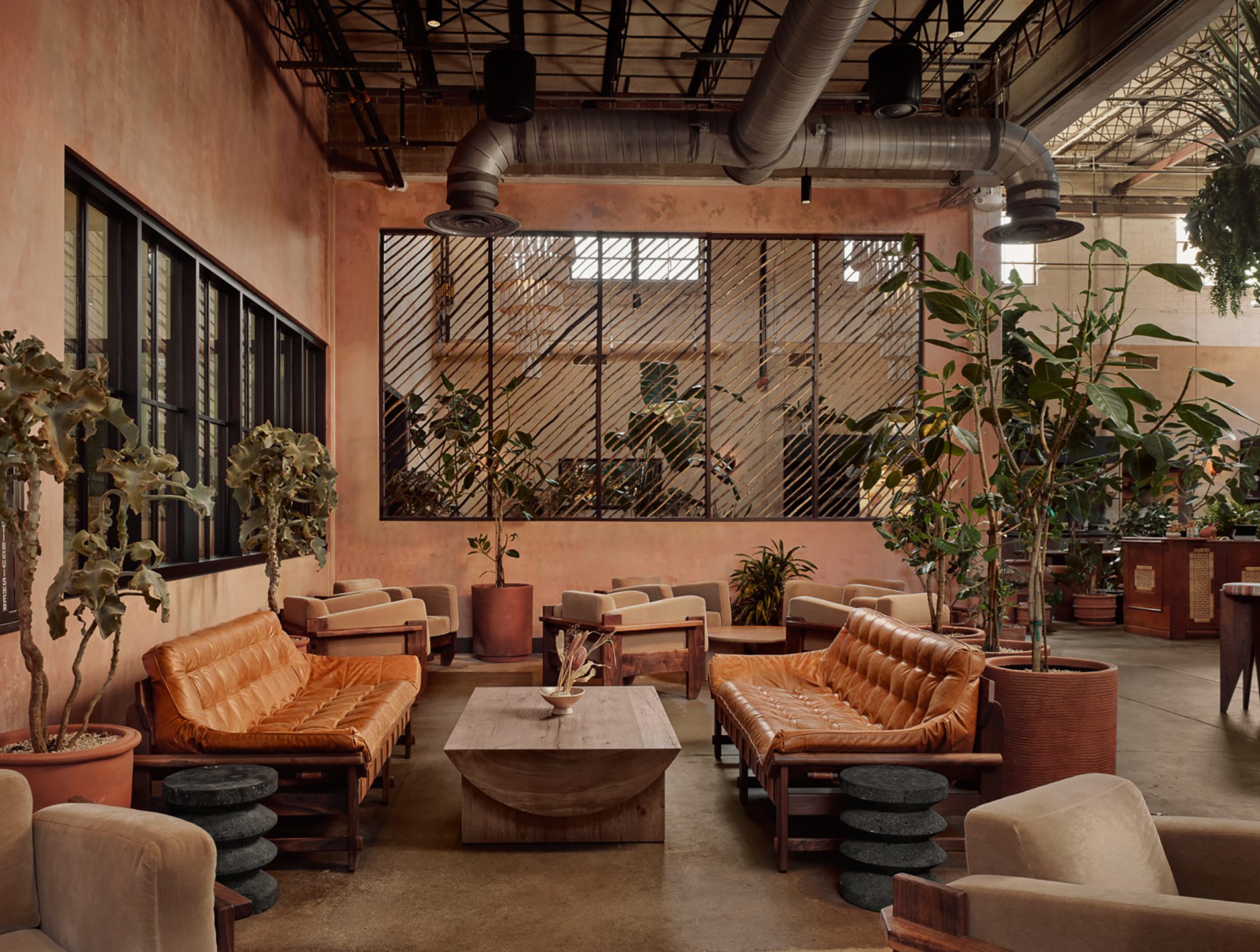
By embedding Mezquite within Pullman Market’s wider mission of adaptive reuse and environmental stewardship, the restaurant and market operate as a living system—one that honors craftsmanship, curbs waste, and advances unique design rooted in craft, culture, and place.
